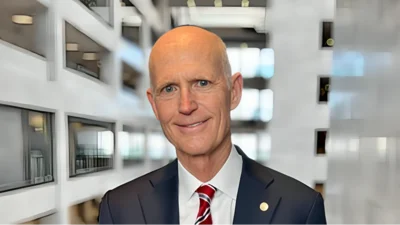WASHINGTON, DC - Nearly three years ago, on March 23, 2010, President Obama signed into law health care reforms that have changed the landscape of our nation’s health care system. Since the law’s passage, the Energy and Commerce Committee has conducted ongoing oversight to monitor the law’s consequences for patients, providers, the economy, taxpayers, and states and make this information available to the American people. Information about the law, including reports on rising health premiums and the effect on jobs and the economy, paint a picture of health care anxiety in which individuals, employers, and state leaders are grappling with the uncertainty and costs of the law. At the same time, the key promises that were used to justify the mandates, taxes, and regulations contained in the law have been proven false time and again. Read below to learn more about the troubling reality of the health care law’s #BrokenPromises. For more information on the committee’s oversight of the law, please visit /healthcareanxietyindex.
OBAMACARE
A Scorecard of the President’s and Congressional Democrats’ Broken Promises
Promise: “Coupled with comprehensive reform… that could save families $2,500 in the coming years - $2,500 per family.
Reality: Despite President Obama’s repeated promises that families could save $2,500, the average family premium has instead grown by over $3,000 since 2008.
Promise: “If you like your current health care plan, you will be able to keep it.
Reality: Obamacare incentives employers to drop coverage in response to new regulations and the availability of subsidized insurance in the new exchanges. According to a new economic report from the Congressional Budget Office, 7 million people will lose their employer-sponsored coverage, nearly double the previous estimate of 4 million.
Promise: “I will not sign a plan that adds one dime to our deficits-either now or in the future."
Reality: In 2010, the Congressional Budget Office calculated that the ten-year cost of Obamacare, in terms of its spending increases, was $940 billion. In 2013, CBO’s ten-year spending estimate was $1.88 trillion. By 2015, the CBO’s ten-year spending projections are likely to exceed $2.5 trillion. Our federal debt exceeds $16 trillion today. A recent report by the GAO suggests that, under the most realistic scenarios, Obamacare will end up adding $6.2 trillion to the deficit over the next 75 years.
Promise: “Under my plan, no family making less than $250,000 a year will see their taxes increase…not any of your taxes."
Reality: According to a March 5, 2013, Joint Committee on Taxation report, Obamacare includes 21 new or higher taxes that will cost taxpayers roughly $1.1 trillion over the next decade. The IRS will impose new and higher taxes on medical devices, prescription drugs, health coverage, high-premium health plans, and health savings accounts that will affect the average American.
Promise: The president promised to help Americans with pre-existing conditions, stating that a “temporary program makes health coverage available and more affordable for individuals who are uninsured and have been denied health insurance because of a pre-existing condition.
Reality: The Obama administration just announced sick Americans would be shut out from the “Pre-Existing Condition Program." House Republicans said that health reform should tackle the biggest problems first - lowering health care costs, increasing access to patient care, and prioritizing funding for chronically ill Americans. House Republicans reiterated that priority in a recent letter to the president.
Promise: So this bill is not only about the health security of America, it’s about jobs. In its life it will create 4 million jobs, 400,000 jobs almost immediately."
Reality: According to the Congressional Budget Office, Obamacare will reduce the labor force by 800,000 over the next decade and the cost to American businesses due to inability or failure to comply is estimated to be $52 billion. Additionally, a 2012 Gallup poll revealed that 48 percent of business owners cite the potential cost of health care regulations in their decision not to hire additional workers. A March 2013 Federal Reserve report on Current Economic Conditions acknowledges the health care law slows hiring, stating, “employers in several Districts cited the unknown effects of the Affordable Care Act as reasons for planned layoffs and reluctance to hire more staff."
Promise: “I will protect Medicare."
Reality: Instead of making the program stronger, Obamacare raided $716 billion from Medicare to fund its $1.9 trillion in new health spending over the same period. Included in these cuts are significant reductions in payments to Medicare Advantage plans, which could disrupt coverage for the 14 million Americans enrolled in the program today.
Promise: “No federal dollars will be used to fund abortions, and federal conscience laws will remain in place."
Reality: HHS released a mandate that requires employers to provide access to abortion-inducing drugs, contraceptives, and sterilization procedures at no cost to their employees. The latest proposed rule expands the definition of institutions that could qualify for “religious employer exemption," but does nothing to fundamentally alter the mandate itself. The administration’s proposal makes a minimal change to the mandate’s religious exemption, but it still allows only formal houses of worship and their integrated auxiliaries a reprieve from the mandate. This change does nothing to help countless individuals and employers who will now be forced to violate their conscience as a direct result of this Obamacare mandate.
Promise: “You see, part of the genius of our Founders was the establishment of a federal system in which each of our states serves as a laboratory for our democracy…our approach has been to give you the flexibility that you to need to find your own innovative ways forward."
Reality: Obamacare tramples state flexibility. States that have or wish to implement market-oriented exchanges cannot because of Obamacare. State exchanges must comport with what HHS dictates and comply with hundreds of pages of rolling requirements coming from bureaucrats in Washington.
Promise: “I’m willing to look at other ideas to bring down costs, including one that Republicans suggested last year: medical malpractice reform to rein in frivolous lawsuits."
Reality: The president did not include medical liability reform in his massive overhaul of the health care system, and he has repeatedly ignored attempts by congressional Republicans to work together on this issue. He ignored the fact that defensive medicine contributes as much as $200 billion a year to rising healthcare costs. According to the CBO, comprehensive medical liability reform would reduce the budget deficit by at least $48.6 billion and as much as $57 billion over 10 years.
Promise: “The Affordable Care Act is designed to make it easier for younger Americans to obtain and maintain health insurance."
Reality: Young adults can stay on their parents’ plan until the age of 26, but those without access to a parent’s plan or those between 27-39 are facing steep increases. Young, single adults who make about $25,000 a year or more will face premium hikes of 42 percent in the individual market. Single thirtysomethings who are ineligible for exchange subsidies will be affected as well, with their premiums likely to increase by 31 percent.





